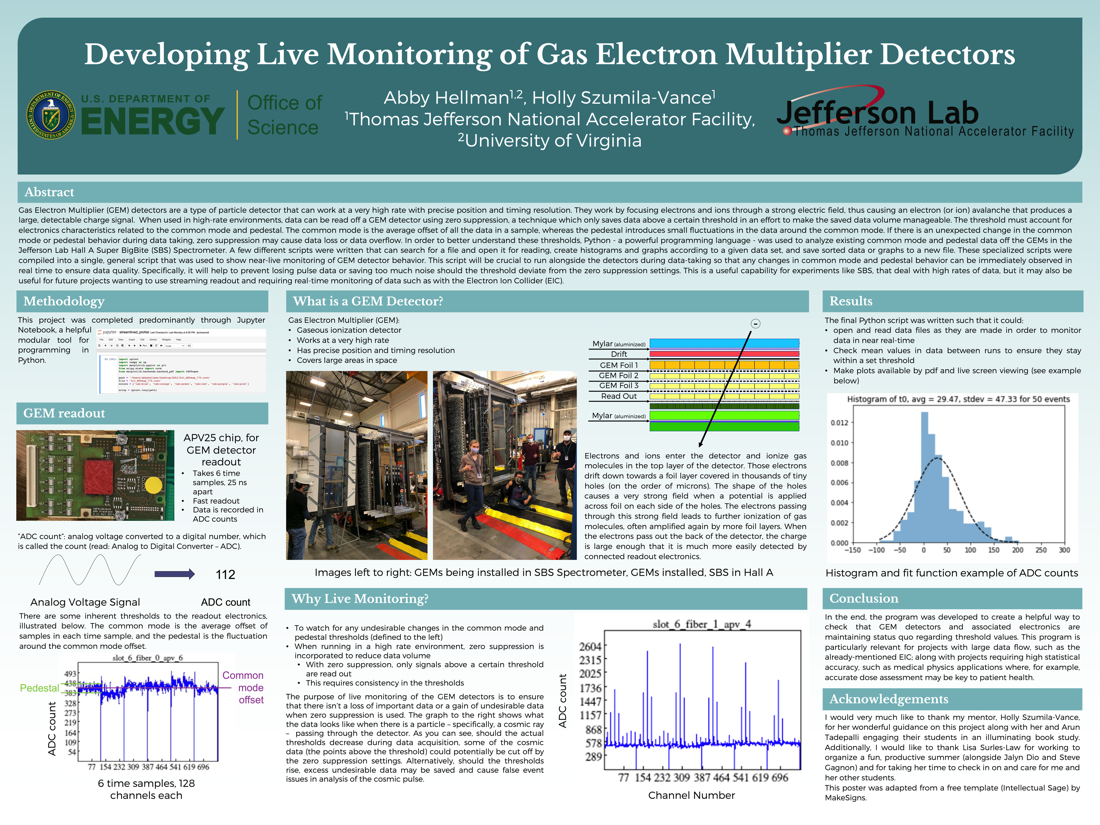Undergraduate Research at Jefferson Lab
Developing Live Monitoring of Gas Electron Multiplier Detectors
Student: Abigail Hellman
School: University of Virginia
Mentored By: Dr. Holly Szumila-Vance
Gas Electron Multiplier (GEM) detectors are a type of particle detector that can work at a very high rate with precise position and timing resolution. They work by focusing electrons and ions through a strong electric field, thus causing an electron (or ion) avalanche that produces a large, detectable charge signal. When used in high-rate environments, data can be read off a GEM detector using zero suppression, a technique which only saves data above a certain threshold in an effort to make the saved data volume manageable. The threshold must account for electronics characteristics related to the common mode and pedestal. The common mode is the average offset of all the data in a sample, whereas the pedestal introduces small fluctuations in the data around the common mode. If there is an unexpected change in the common mode or pedestal behavior during data taking, zero suppression may cause data loss or data overflow. In order to better understand these thresholds, Python - a powerful programming language - was used to analyze existing common mode and pedestal data off the GEMs in the Jefferson Lab Hall A Super BigBite (SBS) Spectrometer. A few different scripts were written that can search for a file and open it for reading, create histograms and graphs according to a given data set, and save sorted data or graphs to a new file. These specialized scripts were compiled into a single, general script that was used to show near-live monitoring of GEM detector behavior. This script will be crucial to run alongside the detectors during data-taking so that any changes in common mode and pedestal behavior can be immediately observed in real time to ensure data quality. Specifically, it will help to prevent losing pulse data or saving too much noise should the threshold deviate from the zero suppression settings. This is a useful capability for experiments like SBS, that deal with high rates of data, but it may also be useful for future projects wanting to use streaming readout and requiring real-time monitoring of data such as with the Electron Ion Collider (EIC).
[Watch the presentation on YouTube]

Citation and linking information
For questions about this page, please contact Education Web Administrator.
